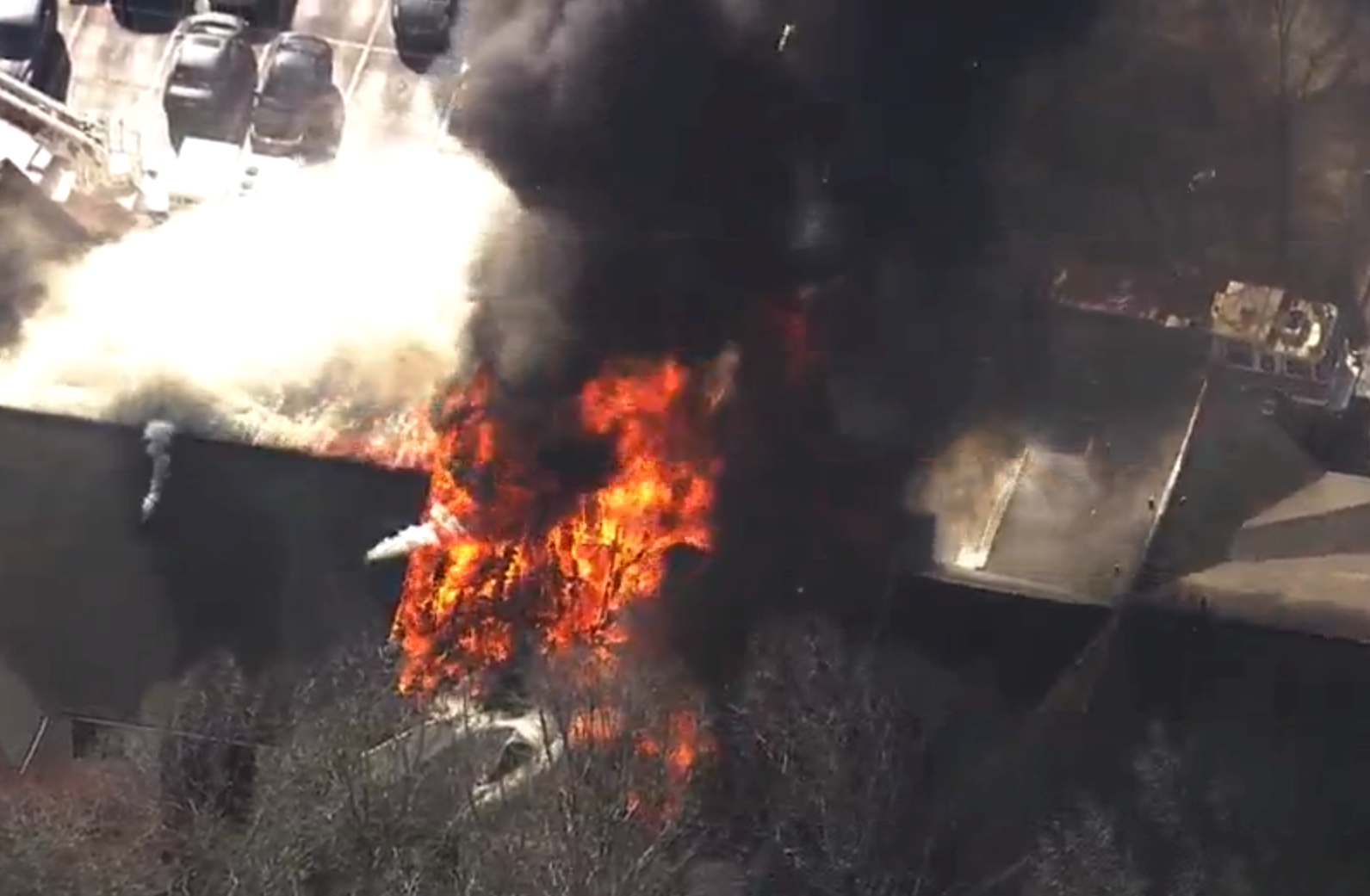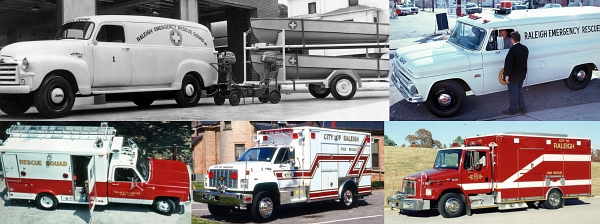Random data and graphics play. Building footprints of Raleigh fire stations, created in November 2021.
Source files at https://legeros.smugmug.com/Errata/Footprints/
Random data and graphics play. Building footprints of Raleigh fire stations, created in November 2021.
Source files at https://legeros.smugmug.com/Errata/Footprints/
End of an era. Cary Area EMS ceased responding to 911 calls in Wake County yesterday, April 1, 2021, wrapping 17,758 days of service after answering their first call on August 18, 1972. (But stay tuned, as they’re planning to retool as a new educational non-profit.)
The “community rescue squad” was formed in September 1971, and after an incident that summer where a boy struck by a furniture truck died after waiting forty-five minutes for an ambulance to arrive from Raleigh.
The steering committee included members of Cary FD and Yrac FD, and presented their ideas to Town Council in October of that year. Instead of a service affiliated with a particular fire department, they formed a private, non-profit corporation, with fifteen charter members.
They started with first aid classes for squad members, creating an advisory board of local leaders, and their first fund drive, to raise money for an ambulance, a rescue truck, and a down payment on a squad.
And so they began, providing decades of service to the community and with so many great, dedicated people.
Among their many milestones: first squad in state to “make general use of pagers” (1972), first ambulance built by Murphy Body Works in Wilson (1973), first Hurst tool in Wake County (1974), first of three volunteer squads in county with paramedics (1986), first nationally accredited volunteer squad (1999).
Below are some historical images of Cary EMS over the years and decades, see more on the History of EMS in Wake County photo page.
Read Mike’s research notes on the early history of Cary EMS at https://www.legeros.com/history/ems.
Effective April 1, 2021, Wake County EMS took over the primary response area of Cary EMS. On/by May 4, they will take over the response area of Eastern Wake EMS. They’re also hiring employees of both agencies. On that date, WCEMS will become the sole EMS provider in the county.
In their heyday, there were as many as nine community rescue squads serving in Wake County. From Apex to Fuquay to Rolesville to Zebulon. Fine legacy of service from all.
This is an ongoing blog posting about the rebuilding of Fire Station 6.
See Legeros updates below. See also ongoing Legeros photos. And here’s the official project site from the city.
March 30, 2021
Now Open
The City of Raleigh’s newest fire station was placed in service at 1:30 p.m. on Monday, March 29, 2021. Earlier that morning, Engine 6 relocated from their temporary quarters shared with Engine 5 at Station 5 on Oberlin Road. They were later joined by Ladder 6, relocated from Station 23 on Pinecrest Road.
Located on Fairview Road, the new fire station replaced a 1949 engine house that was located on the same site, and that was demolished in 2017.
Station 6 is located in the Hayes Barton community and first opened in 1943, in a rented building on the opposite side of Oberlin Road.
Prior Postings
Continue reading ‘Rebuilding Raleigh Fire Station 6 – Now Open’ »
Not fire related, but posting here for history buffs. State road map from 1938, via NC Maps site, showing the route of the old Warrenton Railroad. See full version (PNG, 108MB) in this Google Drive folder.
See also earlier Legeros Blog Archives posting.
See aftermath photos (forthcoming) | Listen to radio traffic
Two alarms were struck in Raleigh on Monday morning, March 22, 2021. Dispatched 9:24 a.m. for 2110 Thesis Circle in south Raleigh, near Lake Wheeler Road and I-40. Three-story, wood-frame, garden-style apartment building with 16,128 square-feet. Built 2014 say tax records.
Engine 2 first-arriving with heavy fire showing on the second and third floors, in the front of the structure. Second-arriving Engine 13 with water supply. Lines pulled, and exterior and interior fire attack started, along with searches of the building.
Battalion 3 arrived, gave secondary size-up, assumed command, and requested a second alarm about 9:35 a.m. By that time, fire was showing through the roof. Staging for second-alarm companies designated as Lake Wheeler Road.
Crews were withdrawn about 9:45 a.m., with evacuation tones sounded. Aerial operations were started, with Ladder 1 in the A/D corner, and Ladder 12 in the A/B corner. Once the bulk of the fire was knocked down, aerial operations were halted and crews returned inside the structure, to complete extinguishment.

WRAL image, screen grab from video footage
Controlled at 11:00 a.m., with crews remaining on scene through the next morning performing overhaul, extinguishing hot spots, and assisting residents with removing personal property. Cause determined as accidental, with twelve units rendered uninhabitable, and 95 people displaced, from news reports. No residents were injured.
Run card: E10, E13, E2, E20, L1, L12, R16, B3, B5 (first alarm), A28, B1, DC1, INV1 (working fire), E12, E8, E6, L14, L20 (second alarm), E5, Sq7, E11, B2 (special call), plus C1, C2, C3, C5, C14 (Safety Officer), plus EMS 11, 29, 50, 14, Truck 1, Medic 91, D1, D7. Chief 200, Chief 102.
Relief: L6, L15, E16, E21 (1300-1500); E4, E22, L23, L25 (1500-1700); E8, E27, B4 (1700-1900); E24, E26 (1900-2100); E17 (2100-0000); E25 (0000-0300); L4 (0300-0600).
Timeline
The Wake County Fire Commission will hold a virtual version of its regular scheduled meeting on Thursday, March 18, 2021. The meeting starts at 7:00 p.m.
The agenda and meeting documents are below. Information on submitting public comments and access for viewing/listening are posted on the Wake County Public Meetings Calendar.
Agenda
This content originated as a Facebook posting.
NCVFA history. Fabric (felt) pennant for the 1956 annual meeting of the North Carolina Volunteer Firemen’s Association, AKA the colored firemen’s association. They met in Warrenton in July of that year, for their 66th annual gathering.
^ Warrenton is notable in the state’s history of black firefighters as having the longest-serving black fire company, dating to the 1860s. They operated until 2004, when the municipal Warrenton FD merged with Warrenton Rural FD.
This one is a rare find, as surviving artifacts of the NCVFA are few and far-between. That is, to date. More on this later, as we’ll be attempting some shaking-of-the-bushes to see if we can find more.
It’s a felt banner, measure some twenty inches in length. This image was created in sections, using a flatbed scanner. It has a clear plastic sheet affixed with staples, and thus the source of the ripples seen in part of the picture.
From the collection of the (future) Plummer Hook & Ladder Museum in Warrenton. They’re a non-profit organization housed in the town’s old fire station, and who are steadily working on their facility and exhibits, but are still a ways away from opening to the public.
This content was first posted on Facebook.
Warrenton history. Factory photo of 1964? Ford/Bean, 750/500. Reg # B6706. Called a John Bean HPV Fire Fighter, and equipped with high-pressure capability.
Delivered with two high-pressure fog guns, two 1 1/2-inch pre-connected lines, three 2 1/2-inch outlets, and 1,200-foot capacity hose bed. Cost around $18,000.
Lettered as “No. 3,” meaning the third motor truck for the town, following a 1938 Ford/Oren, and a 1910s ___/Howe.
Scanned from photo print from the collection of the (future) Plummer Hook & Ladder Museum in Warrenton. They’re a non-profit organization housed in the town’s old fire station, and who are steadily working on their facility and exhibits, but are still a ways away from opening to the public.
Factory photo of Knightdale’s new and sharp-looking ladder. 2021 Pierce Enforcer Ascendant, 1500/500/107-foot. Third for the town[1], following a 1973 Ford/Pierce Telesqurt acquired in 2002, and a 1997 Pierce Quantum rear-mount added in 2009. Photo source.
[1] Two other aerials served the Knightdale Volunteer FD, back in its day, a 1991 E-One rear-mount 75-foot quint, and a 1975 Mack/Maxim/Hamerly mid-mount added in 1999. The Knightdale Volunteer FD became Eastern Wake FD in 2003, which merged with the town in 2020. Read those histories.
February 2021
Updated posting with call totals for 1955, call data for 1975 and 1976, and other information.
September 3, 2016
The Raleigh Emergency Rescue Squad was created in 1953. It was comprised of civilian volunteers and fire department drivers, and they operated equipment that was housed at the downtown fire station. (Their gear was initially funded by city, county, and private donations. They also subsequently received a monthly stipend from the county.) The squad responded in both the city and the county, but was not intended to compete with local ambulance services. They served primarily as a technical rescue unit, and also transporting patients when ambulances were not available in the city.
The volunteer component diminished over the early years (they primarily assisted with body recovery efforts in local lakes and rivers), and the rescue squad was soon operated exclusively by fire department members. A second rescue was added in 1975. After Wake County EMS was organized in 1976, “Raleigh rescue” served as their back-up, transporting patients when no county ambulance was available.
They also functioned as a private ambulance service, transporting firefighters in circumstances that included injuries at fires, injuries on duty, transfers between home and hospital, and even transporting family members.
How frequently were patients transported? As a sampling of official records finds (see below), they transported a few times a month in 1960 (one rescue), as many as 30 times a month by 1975 (two rescues), about the same amount in 1980, down to some ten a month in 1990 (two rescues), and just a couple times a year around 2001 (two rescues).
They stopped transporting patients around 2001. The reasons included that the department was no longer required to maintain that capability as part of their EMT-D requirement, and likely the very low call volume.
Still looking for more data and more oral histories. Will update as found.

Credits, left to right, top to bottom: News & Observer, City of Raleigh, City of Raleigh, Jeff Harkey, Lee Wilson
The Data Continue reading ‘How Often Did Raleigh Rescue Transport Patients?’ »